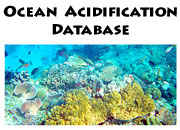| Follow @co2science |
Paper Reviewed
Basso, L., Hendriks, I., Steckbauer, A. and Duarte, C. 2015a. Resistance of juveniles of the Mediterranean pen shell, (Pinna nobilis) to hypoxia and interaction with warming. Estuarine, Coastal and Shelf Science 165: 199-203.
In providing some background for the reason of their study, Basso et al. (2015) write that "the prevalence of hypoxia in the coastal ocean is forecasted to increase with warming (Conley et al., 2009; Rabalais et al., 2010; Keeling et al., 2010), as warming affects oxygen solubility, water column stratification, respiration rates (Conley et al., 2007, 2009) and oxygen thresholds for hypoxia (Vaquer-Sunyer and Duarte, 2011). And since "the expansion of hypoxic zones in coastal areas is one of the predicted consequences of global warming," they felt it important "to evaluate the response of marine biota to warming and hypoxia simultaneously and evaluate their potential synergetic effect," choosing as the subject of their investigation the Mediterranean pen shell (Pinna nobilis).
Working along the shore of the bay of Pollenca, Mallorca, on the west side of the Mediterranean Sea, the four researchers collected juvenile Pinna nobilis specimens in bags that contained local ambient seawater, after which they transported them to a mesocosm facility at the Mediterranean Institute for Advanced Studies, where the bivalves were transferred to a 100-liter tank filled with filtered sea water. There they were maintained and fed with an equal mixture of Isochrys and Tetraselmis species that are commonly used in shellfish culture.
Soon thereafter Basso et al. established eight different treatments consisting of either normal or low oxygen concentrations (100% or 40%), where each of the four members of each of the two groups were exposed to one of four different temperature treatments (24, 26, 28 or 30°C), which treatments were maintained over a period of four days. And what did they thereby learn?
The research team reports that they "found no evidence for either isolated effects of warming, hypoxia or synergies between these stressors, which improves the prospects for conservation of P. nobilis in a [potentially] rapidly warming Mediterranean Sea." And in further support of this conclusion, they note that "a previous study of the effect of warming on juveniles of Pinnna nobilis did not find any sizeable changes in metabolism within the thermal range of 21.3°C-26.3°C during 36 days of experimental treatments," citing the closely contemporary study of Basso et al. (2015b).
And thus we have another good example of the ability of the young of a large Mediterranean clam to successfully cope with projected global warming, even when concomitantly faced with the challenge of increased hypoxia.
References
Basso, L., Hendriks, I.E. and Duarte, C.M. 2015. Juvenile Pen Shells (Pinna nobilis) Tolerate Acidification But are Vulnerable to Warming. http://dx.doi.org/10.1007/s12237-015-9948-0.
Conley, D.J., Carstensen, J., Aertebjerg, J., Christensen, P.B., Dalsgaard, T., Hansen, J.L.S. and Josefson, A.B. 2007. Long-term changes and impacts of hypoxia in Danish coastal waters. Ecological Applications 17: S165-S184.
Conley, D.J., Carstensen, J., Vaquer-Sunyer, R. and Duarte, C.M. 2009. Ecosystem thresholds with hypoxia. Hydrobiologia 629: 21-29.
Keeling, R.F., Kortzinger, A. and Gruber, N. 2010. Ocean deoxygenation in a warming world. Annual Review of Marine Science 2: 199-229.
Rabalais, N.N., Diaz, R.J., Levin, L.A., Turner, R.E., Gilbert, D. and Zhang, J. 2010. Dynamics and distribution of natural and human-caused hypoxia. Biogeosciences 7: 585-619.
Vaquer-Sunyer, R. and Duarte, C.M. 2011. Temperature effects on oxygen thresholds for hypoxia in marine benthic organisms. Global Change Biology 17: 1788-1797.
Posted 3 May 2016



